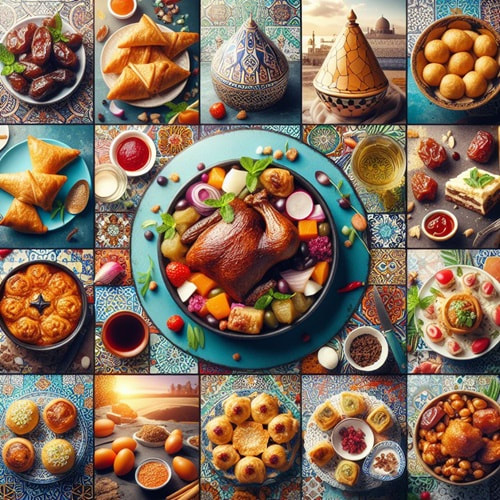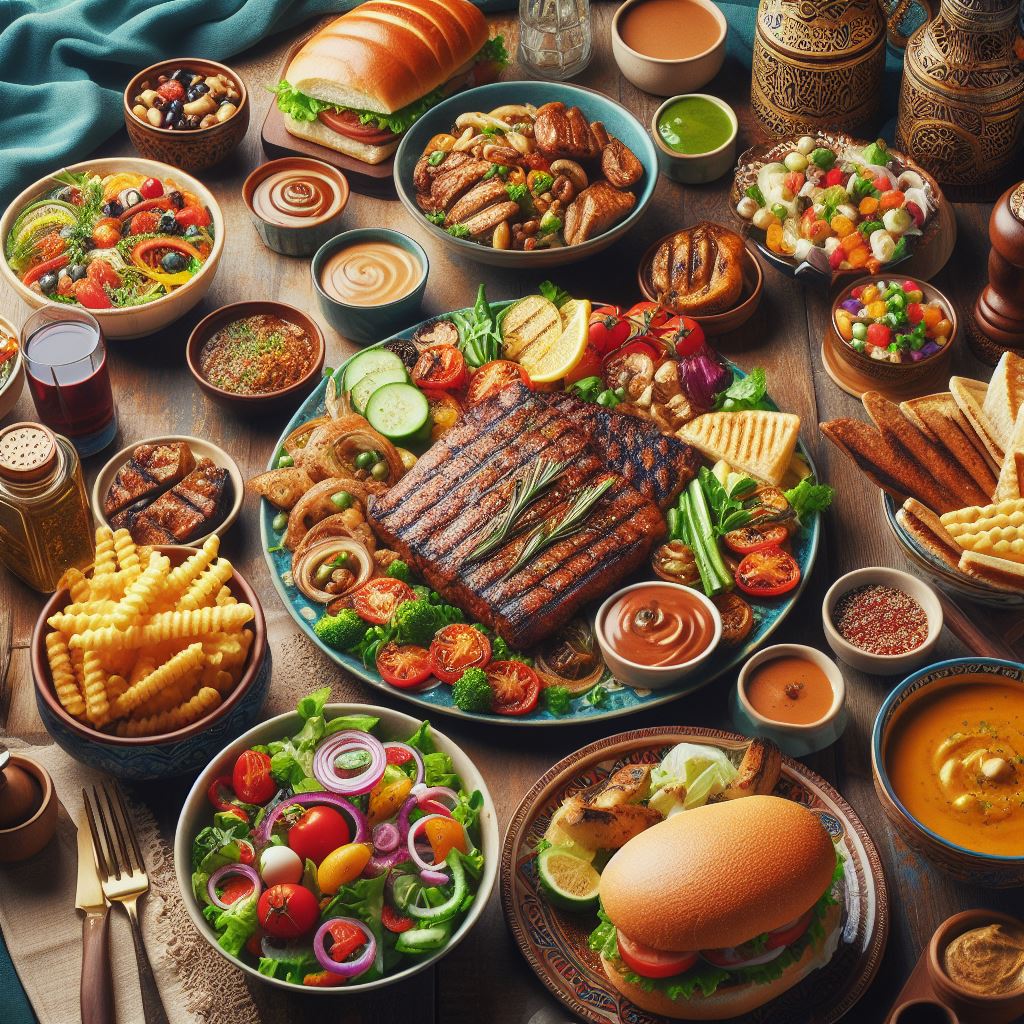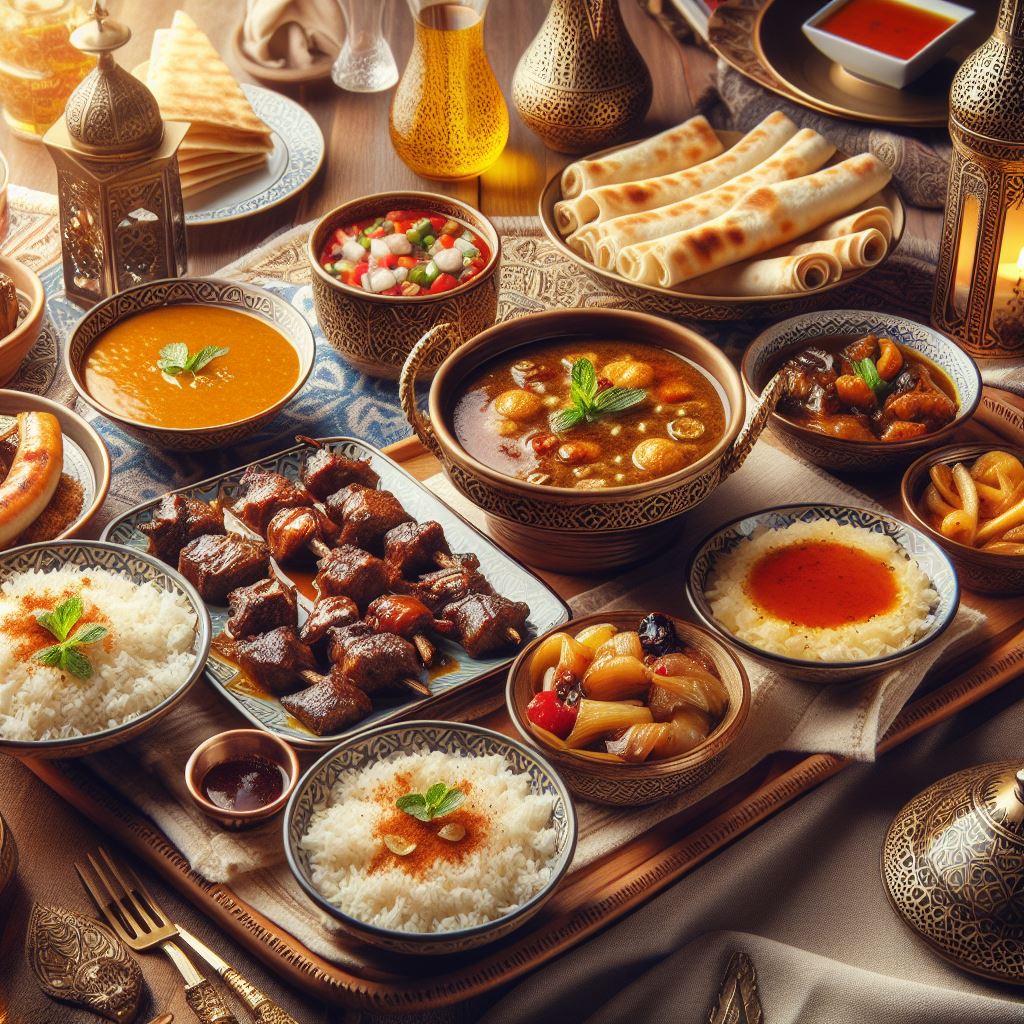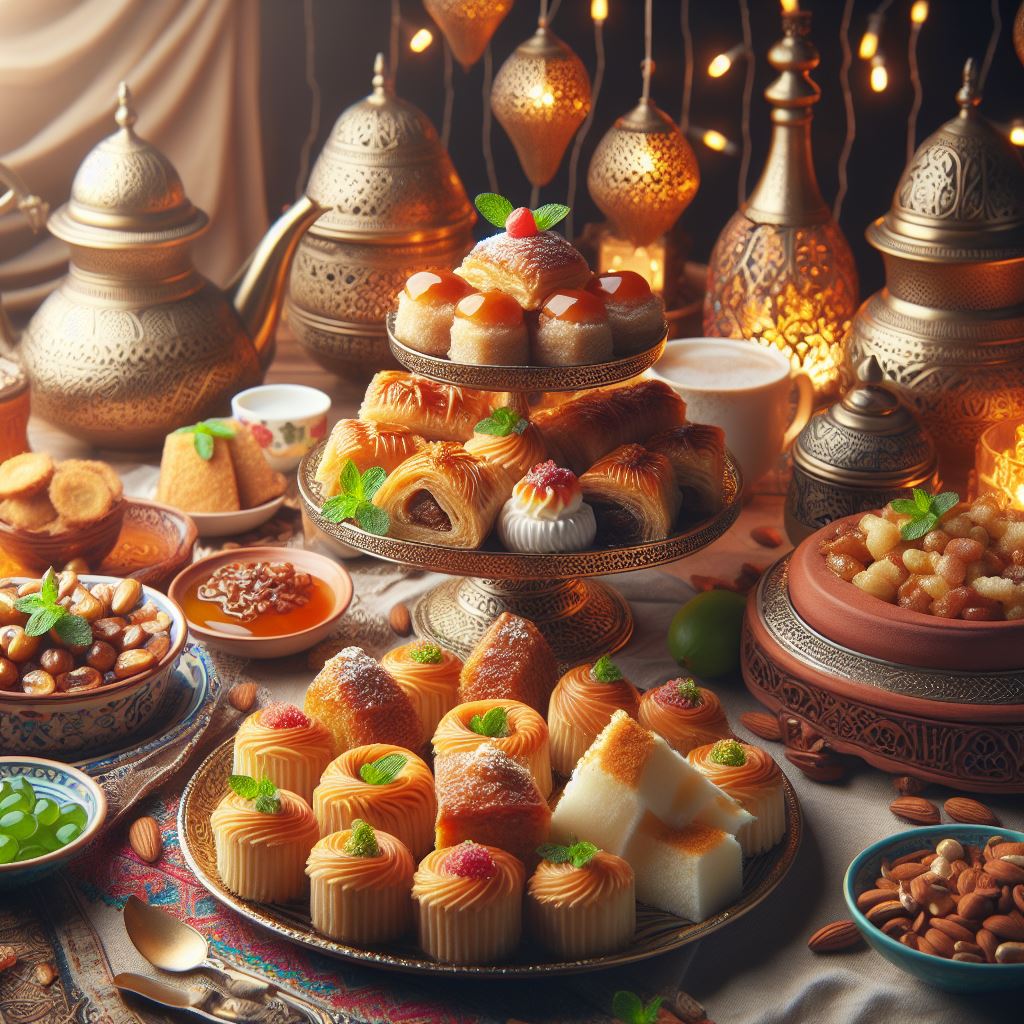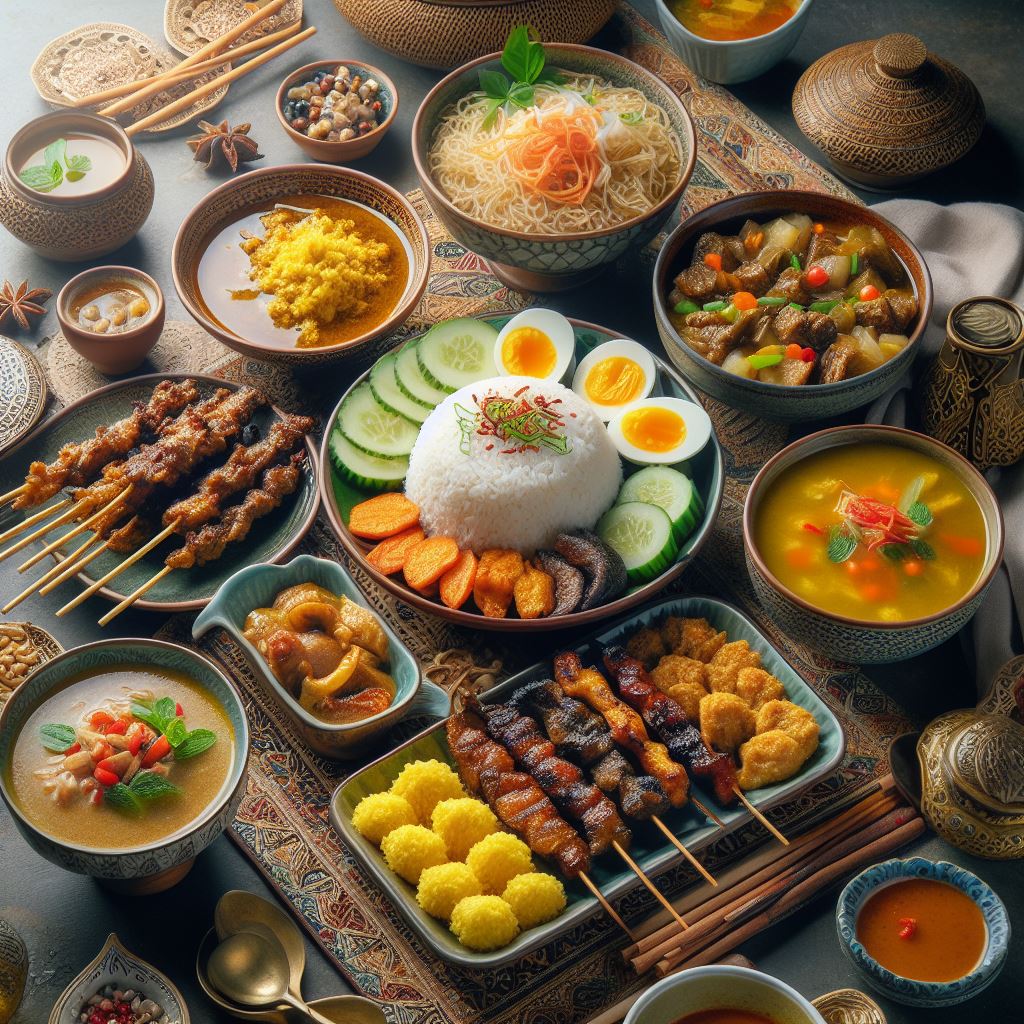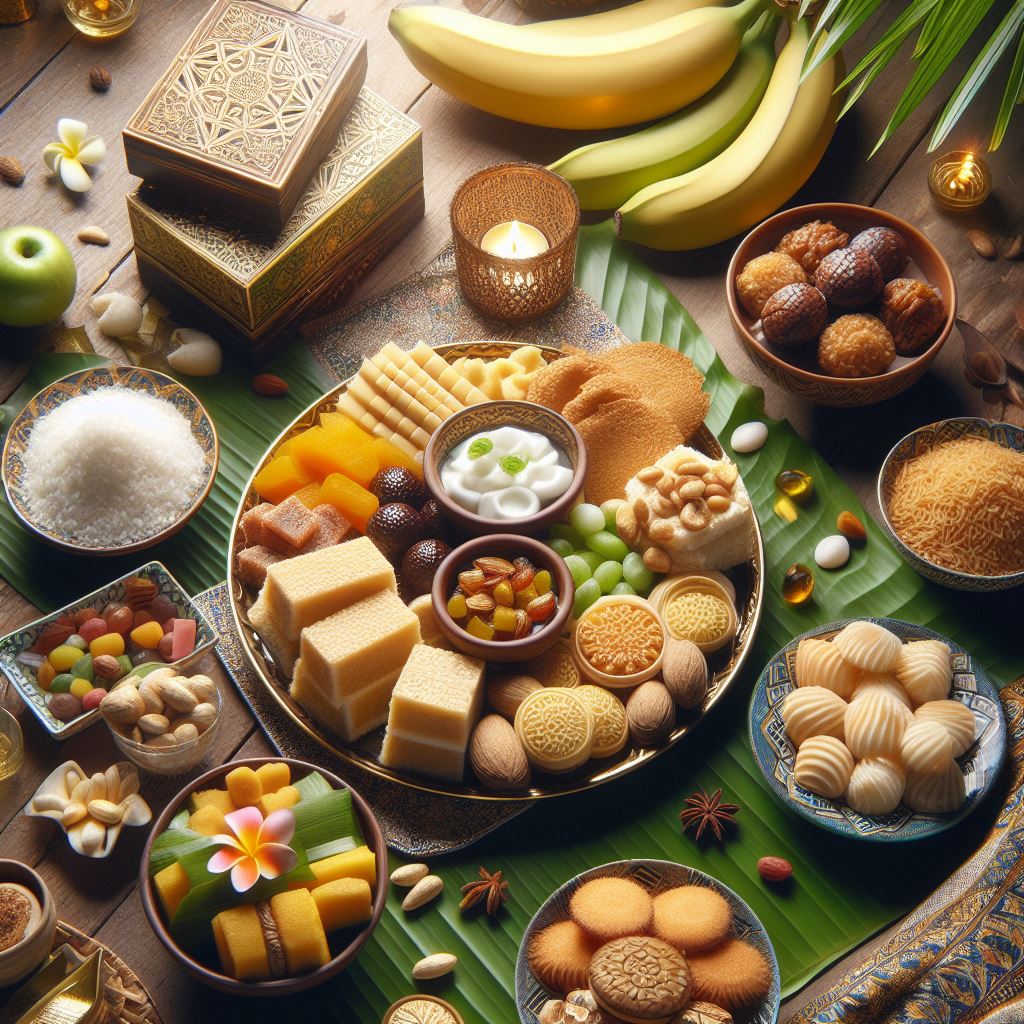Ramadan, the ninth month of the Islamic lunar calendar, is a sacred time observed by Muslims worldwide. It's a month of fasting, prayer, reflection and community. During Ramadan, Muslims abstain from food, drink and other physical needs from dawn until sunset. This period of fasting is intended to promote spiritual growth, self-discipline, empathy for the less fortunate and a deeper connection with their faith. One of the most significant aspects of Ramadan is the daily iftar, the meal that breaks the fast after sunset. Iftar is eagerly awaited by Muslims, as it not only satisfies their physical hunger but also symbolises the end of the day's fast and the opportunity to gather with family and friends to share a meal. Western gastronomic delights: culinary fusion at sunsetIn Western countries, iftar meals seamlessly blend elements of local culinary traditions with the diverse flavours of the Middle East, Southeast Asia and other regions boasting significant Muslim populations. It's a culinary mosaic where grilled meats, vibrant salads, comforting pasta dishes, hearty sandwiches and soul-warming soups grace the iftar table. Alongside these Western meals, traditional favourites like hummus, falafel, biryani and curry add depth and richness to the feast. And no iftar is complete without a sweet indulgence - cakes, biscuits and pastries adorn dessert plates, offering a delightful conclusion to the evening's gastronomic journey in Western Muslim communities. This fusion of flavours and culinary customs not only reflects the multiculturalism of Western societies, but also serves as a testament to the adaptability and creativity of Muslim communities, as they honour their religious traditions while embracing the diverse tastes world wide. It's a celebration of unity, diversity and the universal language of food that brings families and communities together during Ramadan. Arabic culinary heritage: flavours of RamadanIn Arabic countries, iftar is steeped in rich traditions that honour both religious customs and cultural heritage. The meal typically commences with the symbolic consumption of dates and water. This humble yet profound beginning sets the tone for a feast that unfolds with a symphony of flavours and aromas. Traditional Arabic soups, such as hearty lentil or fragrant vegetable soup, provide nourishment and comfort after a day of fasting, while main courses showcase the region's culinary prowess. From succulent grilled meats, like tender kebabs, to fragrant rice dishes such as maqluba or kabsa, each bite is a testament to the culinary mastery passed down through generations. No iftar in Arabic countries is complete without the indulgence of exquisite sweets that tantalise the taste buds and satisfy the soul. Arabic desserts, known for their intricate layers and delicate sweetness, take center stage during Ramadan. Delectable treats like baklava, with its flaky pastry and nutty filling, kunafa, a heavenly combination of shredded pastry and sweet cheese, and qatayef, delicate stuffed pancakes, offer a sublime conclusion to the evening's culinary journey. These beloved sweets not only provide a burst of sweetness but also serve as a symbol of hospitality and generosity, inviting loved ones to partake in the joyous festivities of Ramadan. Southeast Asian culinary extravaganza: feast of tastesIn Southeast Asian countries such as Indonesia, Malaysia and Singapore, iftar meals are a vibrant celebration of local flavours and Islamic customs. These culinary feasts are characterised by a colourful array of dishes that reflect the region's diverse cultural heritage and culinary traditions. From the fragrant aroma of nasi goreng, a flavourful fried rice dish, to the sweet taste of mie goreng, savoury fried noodles, each dish offers a tantalising journey for the taste buds. Skewers of succulent satay, grilled to perfection and served with a side of peanut sauce, add a savoury touch to the iftar spread, while hearty soups and stews, bursting with aromatic spices and fresh ingredients, provide comfort and warmth after a day of fasting. Amidst the savoury delights, Southeast Asian iftar meals also feature an array of sweet treats that delight the senses and satisfy the sweet tooth. Traditional desserts like kuih or kue, a colourful assortment of sweet cakes made from rice flour and coconut milk, and bubur, a creamy porridge infused with pandan leaves and palm sugar, showcase the region's culinary ingenuity and love for sweet indulgences. Tropical fruits, bursting with freshness and flavour, provide a refreshing contrast to the richness of the savoury dishes, completing the iftar experience with a burst of natural sweetness and vibrant colours. In Southeast Asia, iftar is not just a meal but a celebration of community, culture and the joy of coming together to share in the blessings of Ramadan. Ramadan's universal significanceThese iftar traditions, shaped by cultural diversity and regional influences, highlight the universal significance of Ramadan as a time of spiritual reflection, communal solidarity and culinary celebration. They reflect the richness of Muslim heritage, intertwined with flavours, aromas and shared values. As you immersed yourself in this culinary journey, we hope you've discovered the diverse traditions of Ramadan. May the essence of unity and appreciation enhance every meal. Hanan Scheers I travel the world to find unexpected stories. 10 March 2024
Comments are closed.
|
InSite Magazine is created by Just Hanan. We want to show you a world full of culture and lifestyle, and try to give you lots of international travel inspiration.
InSite Magazine Lifestyle Culture Travel Active Foodie Music Visuals Destinations Europe Asia Africa North America South America Oceania More+ home Our team |
|
We respect your privacy and will only reach out when we have something important and exiting to share! - Kami menghormati privasi anda dan hanya akan menghubungi anda jika kami punya sesuatu yang penting dan menarik untuk dibagikan!
|
